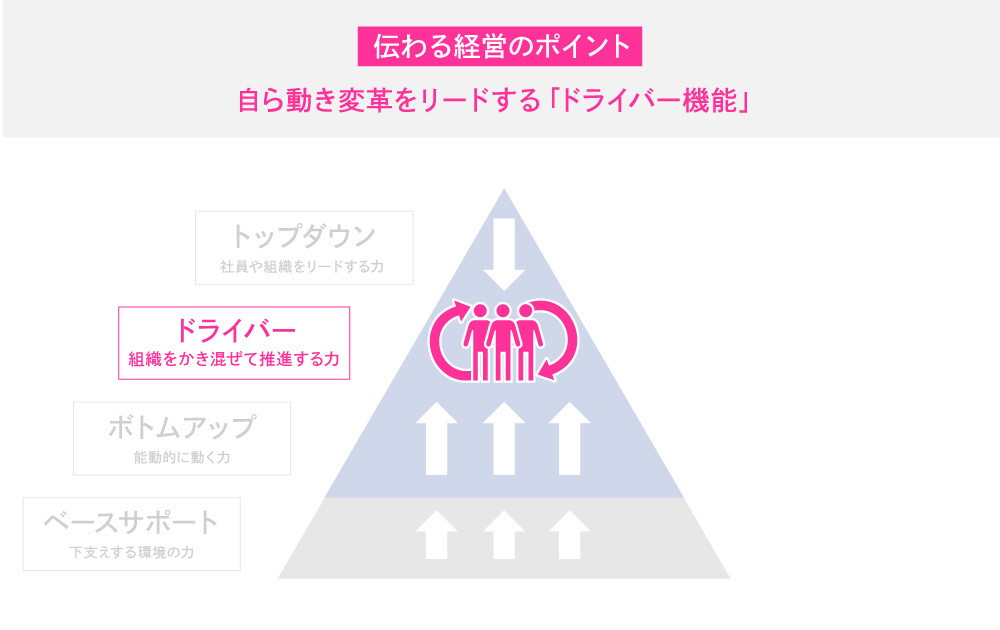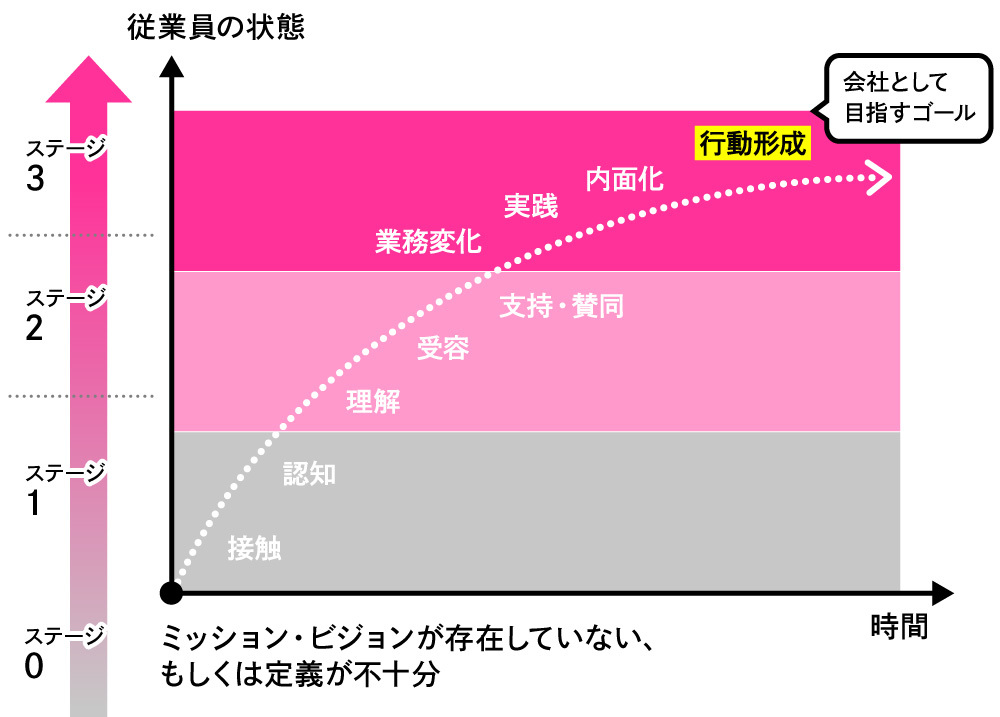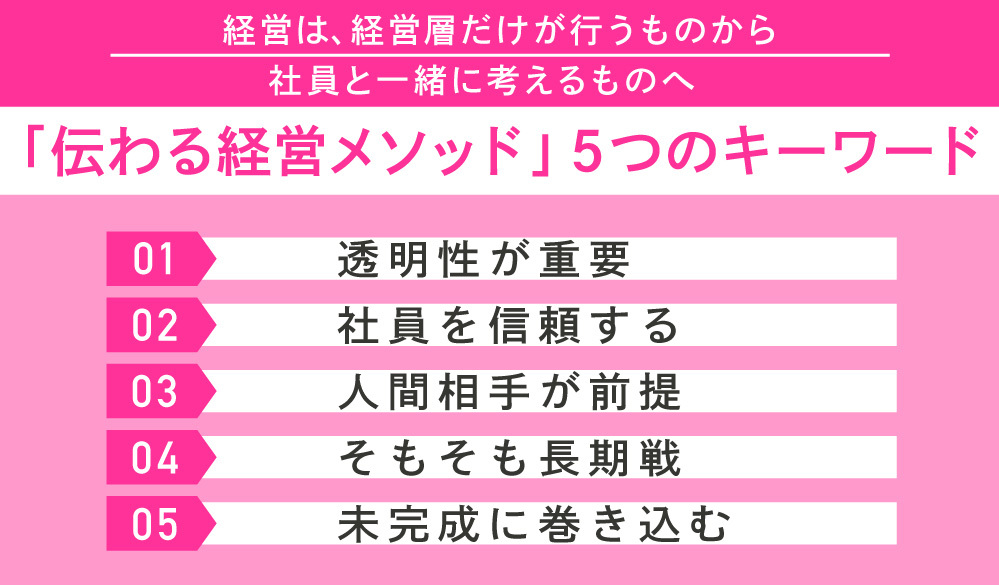Based on the philosophy that "management should evolve from being solely the domain of executives to being a collaborative effort with employees," Dentsu Inc.'s Mihoko Nishii developed the "Communicative Management Method" to support corporate business transformation. In this article, she discusses a project undertaken with AEON MALL Co., Ltd. (※1) with Yuko Owa, Manager of the Strategy Department at AEON MALL.
*1 AEON MALL Co., Ltd.: As a core company within the AEON Group, it handles the developer business and is involved in the development and operation of shopping centers.
What are the management challenges many companies face today?
Nishii: I've been involved in corporate consulting work involving business planning for about 10 years. I've been working with Mr. Oowari since the launch of AEON MALL's new project in 2021.
In a 2022 awareness survey conducted by Dentsu Inc. targeting 1,000 employees from various companies (※2), over 90% responded that "information about transformation is being communicated from their own company." Many companies are now entering a period of transformation. This suggests many employees feel their company's direction regarding future business model transformation, along with related ESG management, SDGs, and sustainability initiatives. Could you briefly share what management challenges your company faces?
Ohwari: Within the Aeon Group, our company handles the developer business, encompassing everything from shopping mall development to management and operation. The majority of our revenue comes from rent paid by our tenants. From the late 1990s through the 2010s, we rapidly expanded our revenue by building shopping malls, primarily in suburban areas. This "rent business" was so successful that we didn't feel the need for business transformation.
However, when the pandemic forced shopping malls to close, a sense of crisis spread throughout the company: "Is our existing business model no longer viable?" This led to a serious consideration of business transformation. Then, when the current President and CEO took office in 2020, he emphasized the need to create a second pillar of business alongside the developer operations.
Nishii: So the pandemic forced the need for transformation. According to a Dentsu Inc. survey of various companies, 75% of employees felt transformation was necessary, but only 32% were taking action themselves. Roughly 40% of employees feel uncertain about what actions to take.
Ōwa: Looking back at projects we've undertaken in the past, for those not directly involved, it often felt like they just started and ended without them noticing. And while thick reports on the transformation projects would come in, employees hardly ever read them... Seeing this situation, I thought we should be driving projects forward while involving more of the company internally.
Nishii: When supporting corporate business transformation, we classify employees' states into Stages 0 through 3. Stage 0 means the direction of transformation itself is not yet defined. From there, employees recognize, understand, accept, and support the transformation direction. Then, the company must implement operational changes, internalize them (meaning each employee truly internalizes the mission and vision), and finally shape behaviors.
We aim for about 30% of employees to reach the goal of "behavioral formation" as a company. We then create an environment where these employees can act more easily. Simultaneously, we push employees in Stages 1 and 2 to move to Stage 3. We believe this creates an environment that drives the transformation envisioned by management.
How can companies facing transformation periods boost employee motivation? Our proposed solution, the "Communicative Management Method," addresses this challenge alongside other management issues as a comprehensive approach to solving complex problems.
The "Communicative Management Method" we are implementing with AEON MALL can be summarized as "a method to transform management from something done solely by executives into something developed collaboratively with employees." We observe that many companies view communicating vision, mission, and purpose updates internally as a last resort. This stems from the perception that management is solely the domain of executives.
The key point of the Communicative Management Method is to address this issue by involving more employees in the process of organizing and creating the vision, mission, and purpose. This fosters co-creation, increases stakeholder engagement, and promotes highly transparent activities.
Corporate and business transformation often fails when approached solely through top-down directives or bottom-up programs driven only by employees. Key factors hindering communication include employees feeling disconnected from management and change leaders, and a lack of enthusiasm stemming from the absence of transformative intent reaching the front lines. We believe visualization and passion are essential to resolving these issues.
We prioritize a driver function that operates between top-down and bottom-up approaches—one that actively moves and leads change—rather than being a mere administrative office handling coordination tasks or a steering committee that merely makes decisions on presented proposals. This is precisely the core of the project Aeon Mall is implementing.

Ohwari: I assumed the role of Manager of the Strategy Group within the Strategy Department in the spring of 2021 and launched the transformation project. Recognizing that the company must become one where innovation is the norm, I first set the goal of presenting a 2030 Vision. This vision serves as a transitional milestone for corporate transformation – neither as short-term as a business plan nor as long-term as a management philosophy or purpose. Immediately upon taking this role, I proposed to management a direction: to transform the business itself towards the 2030 Vision while simultaneously driving a mindset shift among the employees who would execute it. We launched this initiative with the support of Dentsu Inc.
The project, named "studio LIFE DESIGN," is now entering its third year. We selected members who will lead our business in the 2030s—the generation destined to become future executives—and established the theme: "We decide our own future." It is a project tackling internal cultural reform by envisioning our company's ideal state in 2030 and taking action. We established the 2030 vision: "AEON MALLS: Co-Creating with Local Communities." Aiming to connect stakeholders sharing the same vision and co-create activities leading to a sustainable future for local communities, we are currently devising and executing concrete actions.
※2 Source: Dentsu Inc. " : Employee Awareness Survey on Corporate Transformation" Survey Participants: 1,000 employees aged 20-59 (600 large company employees, 300 small/medium company employees, 100 venture company employees; equal male/female response rate)
Five Keywords for Effective Communication in Management
Nishii: It's been three years since "studio LIFE DESIGN" launched. To shift from management that communicates to management that resonates, could you share what specific things you, Mr. Oohana, are focusing on?
Ōwa: There are five key points. The first is "Transparency is crucial." When proposing this project, I wanted to actively share the discussion content and progress internally. That's why I enlisted the help of Dentsu Inc., the communication experts, starting with you, Nishii.
Nishii: Even when you try to create a state of effective communication by documenting discussions in minutes or featuring them in the company newsletter, it's not uncommon for these materials to go unread. To properly communicate with employees at Stage 2 or Stage 1 of the corporate transformation I mentioned earlier, I believed it was crucial to make things visually and intuitively understandable.
Therefore, we fully utilized graphic recording to summarize the key conversations and points into a single visual. This allowed us to share updates on internal bulletin boards and newsletters without delay. It also enabled us to utilize these visuals in IR activities like integrated reports and shareholder meetings. This made it possible for various stakeholders who weren't directly participating in the discussions to visually experience the process and gain a sense of the journey.
Ōwa: The second point is "Trusting Employees." When we launched the project, management actually said, "Perhaps we're the only ones feeling this sense of crisis that we must change; maybe employees don't feel it." But that wasn't the case at all. Talking with peers and colleagues across generations, many people genuinely felt, "We must change." They were actually colleagues sharing the same feelings. But many employees, while recognizing the need for change, struggle to translate that into concrete action. Therefore, management must trust employees and provide a platform where they can take action.
Nishii: Indeed, in our work with other companies, we often hear concerns like, "Our employees seem disengaged. No matter how passionate we are, our messages just don't resonate." But when we dig deeper, that's often not the case. For example, in a company with branches nationwide, we might discover someone in a Hokkaido office is incredibly motivated for change. You find allies in the most unexpected places. Identifying ambassadors within the company who can lead the charge, and then having those ambassadors become the drivers we discussed earlier, is crucial.
Ōwa: The third point is "working with people as the foundation." While we talk about the big goal of changing employee mindsets, it ultimately involves individual people, so things rarely go as planned. Even within the core 20-member team of the "studio LIFE DESIGN" project, each person has different levels of passion and individual motivations, so decisions don't always flow smoothly. Therefore, it's vital to focus on how to engage with people over the long term.
Nishii: While large corporate projects set KPIs and KGIs, we're careful to properly capture the aspects invisible in numbers because we're dealing with people. Sometimes it's necessary to flexibly adjust KPIs.
Ōwa: The fourth point is "it's fundamentally a long-term battle." Our company has grown steadily since the mid-1990s, taking over 20 years to develop our current corporate culture and structure. There's no magic solution to change a culture and structure cultivated over such a long period in just a year or so. Therefore, when starting this project, I told the management: "Please allow at least three years. It takes five years for most employees to start feeling the company is changing, and another three to five years before outsiders notice the transformation. That's just how it is." Through this project, I feel we've developed the resilience to take a long-term perspective.
Nishii: Recent KPI surveys show a gradual increase in the number of people taking action, right? The numbers also reflect a tangible sense that more colleagues are joining the effort to drive change, built up step by step. Taking a long-term perspective is crucial.
Ōwa: Of course, some aspects can change within one or two years, but true fundamental change takes time. In some companies, management might say, "If we don't see results quickly, we should stop." To avoid that, we make sure to establish clear commitments with management.
Nishii: How did you communicate with the executives?
Ōwa: That leads to the fifth keyword: "Engaging with the Unfinished." My initial mission in the project was to present the 2030 vision, developed by employees, to management. At the time, I mistakenly believed it had to be fully finalized before presentation. While we felt confident after a year of discussion, presenting it to management in a short timeframe meant they couldn't grasp its core essence.
Now, as we translate the vision into concrete business plans for each department, we're exploring what's achievable. Rather than creating a perfect plan, we're presenting it to management in an unfinished state and creating many opportunities for discussion. When management feels they've co-created the ideas, they develop a sense of ownership – it becomes their plan. This makes them actively engage and work towards success. Involving management as partners is crucial.
Our future vision is to co-create the city together with various partner companies and stakeholders. Going forward, we want to expand further outward, actively involving the Aeon Group and tenant companies.
Nishii: The five keywords you mentioned encapsulate the essence of communicative management. Communicative management isn't something only executives or employees do alone; it's vital to think and build it together with employees. Thank you very much.










